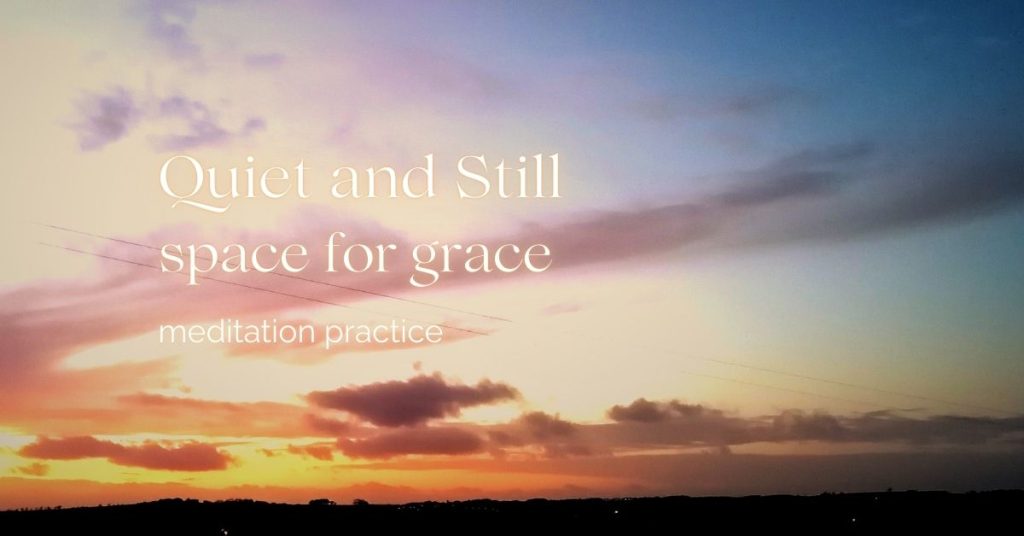
But even with everything digital off, how noisy is the mind? The practice of meditation, or contemplation in Christian faith, quietens the mind. So what is this sound of silence?
In a nutshell, I would say, personally, it has been experiences of complete ease, joy, oneness, clarity, and/or love. Some might stop there, but I would also say it is somehow meeting God, darshan in Sanskrit. It’s a comprehension of our relationship: communion.
Ouph, this is very high! But glimpsed just often enough, or the hope of it, this numinous knowledge keeps us on a spiritual path. But, the idea is off-putting, perhaps, if a beginner: no glimpses so far, or unacknowledged inklings, and crunchy knees.
Fortunately, yoga practices train us, and they are offered in a scale known as the ‘Eight Limbs’, ashtanga, see right.
Fortunately, we can go forward on all fronts: living well, doing the practice and then sitting…just sitting. Asana means sitting.
As we sit, first the mind can get really busy with the day’s/week’s/lifetime self-justification about this and that. If we can begin to rise above that, then a big mirror of our faults comes up and we might feel shame. As Jesus said, ‘blessed are the poor in spirit’: self-awareness and humility are blessings. And so this stage is a big practice of forgiving ourselves and others, as well as giving gratitude and loving kindness. Probably a stage that takes more than a lifetime.
Just sitting with all this can take a while. In fact viveka, discernment, is the name for this process; what a rod for my back in naming this space Viveka Gardens! But grace will come, and if you have faith (and this is a benefit of Christian faith I did not find in yoga), you make yourself open to ultimate forgiveness, finding yourself as a child: simple, open and wonderous. Well, work in progress.
I write we but I mean I. It could be different for you. But the idea is, we become free of the pains and pleasures in the temporary material world. Then vairagya – dispassion/non-attachment /renunciation – descends on us. Then we are ready to ascend through the last three stages towards the bliss state, the sound of silence.
So come for yoga, learn the physical techniques. Have faith or spiritual support to help you to live rightly and to help you compute the pain of life. And let’s just sit. And maybe we’ll experience the sound of silence.
Monthly meditation workshops
for women who want to (re-)engage with meditation practice
starts October 2025
1&2: A set of ethics consisting of ten dos and don’ts (the yamas and niyamas, analagous to the ten commandments) because if you know you’ve behaved badly, how can you sit with yourself? but see below… 3&4: asana (yoga exercises) and pranayama (breathing exercises) to make the body strong and flexible and the nervous system resilient because if you can’t sit still, how can you transcend your body-mind? 5: pratyahara, ‘withdrawal of the senses’, like a tortoise drawing in its limbs and head. 6&7: dharana, one-pointed concentration but awareness of the process and dhyana, meditation proper, flowing. 8: samadhi, the bliss state, the nutshell I tried to describe, but unique and glorious to each. This is the path of Raja Yoga as outlined in the Yoga Sutras of Patanjali, c300BC It looks like a ladder to achieve, but actually you go forward on all fronts, a little bit at a time according to your capacity
Fr Richard Rohr is a Franciscan monk and a Christian writer who’s way of articulating Christian mysticism bridges with yoga philosophy in an accessible way. If you want to go explore that you could begin hereEight limbs